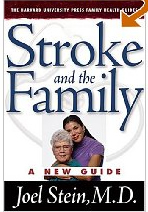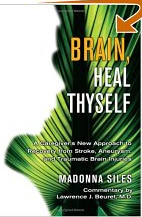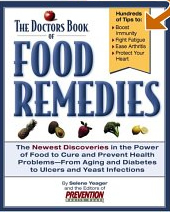Stroke: Causes, Symptoms, Treatments and Helpful Resources

The below provides a general overview on this topic and may not apply to everyone. Any treatment protocol should be discussed with a qualified healthcare practitioner. Please refer to: Medical & Legal Disclaimer.
Critical Statistics
About 780,000 Americans suffer strokes each year, resulting in the death of about 160,000 stroke victims annually. Stroke is a leading cause of premature death and long-term disability in the Western world.
⚠️ Time Is Critical
Starting treatment within minutes to several hours after a stroke is crucial in limiting brain damage and can often limit the disability caused by the stroke.
Thousands of people die UNNECESSARILY because the people around them don't recognize the symptoms of a stroke.
A Neurologist stated that they can treat stroke patients - provided they receive treatment within 3 hours of a stroke.
One symptom of a stroke could be as ordinary as stumbling. For example, in one case, a woman stumbled, but said she was fine. Hours later she was dead. Her stumbling was actually caused by a stroke. Nobody realized that...
🚨 Emergency: 4 Quick Tests to Identify a Stroke
Ask the person to perform these simple tasks:
1. Smile
If he or she had a stroke, they won't be able to smile normally or the smile will be uneven.
2. Speak a Complete Sentence
Listen for slurred speech or difficulty finding words.
3. Lift BOTH Arms
A stroke victim either wouldn't be able to, or only partially lift one arm.
4. Stick Out the Tongue
If the tongue is uneven or crooked, that could indicate a stroke.
Common Symptoms of a Stroke
Primary Warning Signs:
- Strokes are typically painless while in progress, except when caused by a ruptured blood vessel (sudden excruciating headache)
- Trouble with speech or difficulty talking; trouble understanding what other people are saying
- Feeling weak or numb on one side of your body, especially if it strikes suddenly
- Suddenly having trouble with coordination on one side of the body
- Seeing double or having trouble focusing on objects or people
Victims May Also Experience:
- Memory loss
- Tingling sensations on one half of the body
- Confusion
- Nausea
- Stumbling
- Not being able to talk
- Awareness of what is happening but not being able to do anything
- Headaches
The Two Major Types of Stroke
Ischemic Stroke
Results from an interruption in blood flow through a specific artery supplying a specific area of the brain. When brain cells die as a result of this type of stroke, the resulting injury to the brain is called a cerebral infarction.
Hemorrhagic Strokes
Caused by a ruptured blood vessel either inside the skull, but outside the brain (extracerebral hemorrhage), or inside the brain (intracerebral hemorrhage). The resulting hemorrhage damages the brain, creating a mass of accumulated blood (hematoma) that compresses nearby brain tissue and interferes with its blood supply.
Modified Rankin Scale - Stroke Severity Rankings
0 = No symptoms at all
No limitations and no symptoms.
1 = No significant disability
Symptoms present but no other limitations.
Question: Does the person have difficulty reading, writing, speaking, balance, coordination, vision, numbness, loss of movement, difficulty swallowing, or other stroke symptoms?
2 = Slight disability
Limitations in participation in usual social roles, but independent for daily activities.
Questions: Has there been a change in ability to work or care for others? Changes in social and leisure activities? Problems with relationships or isolation?
3 = Moderate disability
Need for assistance with some instrumental activities but not basic daily activities.
Question: Is assistance essential for preparing meals, household chores, managing money, shopping, or traveling locally?
4 = Moderately severe disability
Need for assistance with some basic daily activities, but not requiring constant care.
Question: Is assistance essential for eating, using the toilet, daily hygiene, or walking?
5 = Severe disability
Someone needs to be available at all times; care may be provided by either a trained or untrained caregiver.
Question: Does the person require constant care?
Personal Experience & Recovery Resources
Only months after working on this page, a member of our family suffered a severe stroke. He was paralyzed on his right side and the initial prognosis was transfer to a Skilled Nursing Facility, if he was going to survive. The first week was critical.
Three months later he was able to move quite freely. His major handicap continued to be his inability to communicate. He suffered both from aphasia (problems with word retrieval) and apraxia (paralysis of muscles involved in speech). However, over time spontaneous speech continued to improve.
Helpful Recovery Resources:
- Bungalow Speech Software: www.bungalowsoftware.com - helpful for speech rehabilitation
- Rosetta Stone: Language-learning software has been successfully used for rehabilitation
- Professional speech rehabilitation: ~$100 per 45-minute session
⚠️ Important: Driving Assessment
Before allowing a stroke patient to drive, assessment by a driving instructor TRAINED in evaluating individuals with brain damage is essential.
Recommended Driver's License Label Information:
- • Cause/extent of disability ("stroke patient with language disability")
- • Contact name and telephone of caregiver or doctor
- • If patient is on blood thinners (medical alert information)
Nearly three YEARS later, he is able to move around quite freely, rides his bike and drives around town. If you find yourself caring for a stroke patient, please accept our best wishes for a quick recovery. The road ahead is not easy, but with the right resources can be managed.

Causes of Stroke
Heart Disease
Including high blood pressure, high cholesterol and diabetes increase stroke risk. Irregular heartbeat can cause clots to form and break off into the bloodstream.
High Blood Cholesterol
When blood cholesterol is higher than the body can use, surplus cholesterol may eventually cause strokes and cardiovascular distress. Learn more about cholesterol management.
Diabetes
Diabetics are 2-4 times more likely to die of a heart attack or suffer a stroke. In a 2002 study, 40% of first-stroke patients had high glucose levels, with increased mortality and complications.
Magnesium Deficiency
According to the National Academy of Sciences, most Americans are magnesium deficient, contributing to high rates of heart disease, stroke, and other conditions. Learn more about magnesium.
Medication Risks
Can reduce breast cancer occurrence but increases risk for blood clots, stroke and uterine cancer.
Standard hormone replacement therapy increases stroke risk and other complications.
Prevention Strategies
Exercise
Dr. Steven Hooker's research found that men who did the most cardiovascular exercise had a 40% lower stroke risk, women had 43% lower risk.
Recommendation: At least 30 minutes of moderate-intensity physical activity on most days
Blood Sugar Control
Studies show that control of high blood sugar can significantly help decrease chances of stroke, cancer, and cognitive impairment.
Screening Recommendations:
- • Yearly blood glucose tests (especially over 40)
- • High-risk groups: family history, overweight, 40-45+ years

Supportive Nutrition
Food Remedies for Stroke Prevention
Vitamin E
This antioxidant significantly slows the progression of Alzheimer's and stroke-related dementia. However, balance is key - too much can be harmful.
Recommended: 30mg to 400mg per day (consult your doctor)
Also applicable in cancer treatments
Omega-3 Fatty Acids
Evidence shows that high omega-6 and low omega-3 levels contribute to obesity, hypertension, insulin resistance, and stroke.
🌰 Flaxseeds
Highest ALA, lowest LA. Helps improve essential fatty acid balance. Protects the heart through improved heart rhythms and reduced platelet stickiness.
🍌 Bananas
High in potassium, low in salt. FDA allows claims for reducing blood pressure and stroke risk. Can cut stroke death risk by up to 40%!
🌿 Ginkgo Biloba
Improves blood supply and circulation to the brain. Anti-oxidant properties protect against circulatory problems that can lead to stroke.
🍫 Organic Raw Chocolate
Flavonol-rich cocoa acts similarly to low-dose aspirin in promoting healthy blood flow and reducing clot risk.
🌶️ Bell Peppers
Contain vitamin B6 and folic acid, important for reducing homocysteine levels associated with increased stroke risk.
🥝 Kiwifruit
Help lower triglyceride levels and reduce platelet clumping, which could prevent heart attack or stroke.
🟢 Peas
Full of folate, a powerful B vitamin known to lower blood levels of stroke-promoting compounds.
💊 Vinpocetine
Derived from periwinkle leaves. Improves red blood cell flexibility for better brain circulation. (5-10mg daily - consult practitioner)